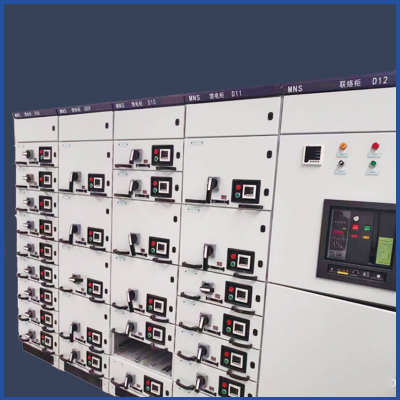在山東這片工業(yè)蓬勃發(fā)展的土地上�,機(jī)箱機(jī)柜作為電氣設(shè)備的 “守護(hù)者”����,內(nèi)部電子元件持續(xù)運(yùn)行產(chǎn)生的熱量,如同潛藏的 “高溫隱患”���。尤其在夏季高溫或設(shè)備高負(fù)荷運(yùn)轉(zhuǎn)時(shí)���,若散熱不佳,輕則影響設(shè)備性能�����,重則導(dǎo)致元件損壞����。優(yōu)化機(jī)箱機(jī)柜的內(nèi)部布局,實(shí)則是一場與熱量的 “博弈”�����,需從空間規(guī)劃、通風(fēng)設(shè)計(jì)���、散熱部件選擇等多方面入手����,為設(shè)備打造的 “降溫系統(tǒng)”����。
In the thriving industrial land of Shandong, computer cabinets serve as the "guardians" of electrical equipment, and the heat generated by the continuous operation of internal electronic components is like a hidden "high temperature hazard". Especially during high temperatures or high load operation of equipment in summer, poor heat dissipation can affect equipment performance in mild cases and damage components in severe cases. Optimizing the internal layout of chassis cabinets is actually a "game" with heat, which requires starting from multiple aspects such as space planning, ventilation design, and selection of heat dissipation components to create an efficient "cooling system" for the equipment.
一、合理規(guī)劃元件布局:構(gòu)建熱量疏散的 “交通網(wǎng)絡(luò)”
1����、 Reasonable planning of component layout: building a "transportation network" for heat dissipation
機(jī)箱機(jī)柜內(nèi)部元件的擺放位置直接影響熱量傳導(dǎo)路徑。�����,應(yīng)遵循 “發(fā)熱大戶優(yōu)先” 原則���,將 CPU���、電源模塊等高發(fā)熱元件分散布置,避免熱量過度集中�����。例如,將大功率電源放置在機(jī)柜底部靠近通風(fēng)口處���,利用熱空氣上升原理�����,使熱量快速排出;同時(shí)�,將低發(fā)熱元件(如接線端子、小型繼電器)布置在高發(fā)熱元件周圍的非關(guān)鍵散熱路徑上�����,減少對主散熱通道的干擾��。其次���,優(yōu)化線纜排布�,避免因線纜雜亂纏繞阻礙空氣流動�����。可采用線槽或扎帶對線纜進(jìn)行規(guī)整����,使氣流能夠順暢穿過元件間隙,加速熱量交換���。
The placement of internal components in the chassis and cabinet directly affects the heat conduction path. Firstly, the principle of "giving priority to large heat generating units" should be followed, and high heat generating components such as CPUs and power modules should be arranged in a dispersed manner to avoid excessive heat concentration. For example, placing a high-power power supply at the bottom of the cabinet near the ventilation opening, utilizing the principle of hot air rising to quickly dissipate heat; At the same time, arrange low heating elements (such as wiring terminals and small relays) on non critical heat dissipation paths around high heating elements to reduce interference with the main heat dissipation channel. Secondly, optimize cable layout to avoid obstructing air flow due to tangled cables. Cable trays or zip ties can be used to regulate cables, allowing airflow to smoothly pass through component gaps and accelerate heat exchange.
二����、科學(xué)設(shè)計(jì)通風(fēng)結(jié)構(gòu):打造空氣對流的 “高速通道”
2�����、 Scientific design of ventilation structure: creating a "high-speed channel" for air convection
通風(fēng)是機(jī)箱機(jī)柜散熱的核心���,合理的通風(fēng)結(jié)構(gòu)能顯著提升散熱效率�����。山東地區(qū)夏季高溫潮濕����,需著重考慮自然對流與強(qiáng)制對流結(jié)合的方式��。機(jī)柜底部可開設(shè)進(jìn)風(fēng)口,并加裝防塵網(wǎng)����,防止灰塵進(jìn)入的同時(shí),引導(dǎo)冷空氣從底部流入�;頂部設(shè)置出風(fēng)口,利用熱空氣上升特性�,使熱空氣自然排出。對于熱量較大的設(shè)備��,可安裝軸流風(fēng)扇或離心風(fēng)扇增強(qiáng)強(qiáng)制對流�。風(fēng)扇的安裝位置和風(fēng)向需精準(zhǔn)設(shè)計(jì):進(jìn)風(fēng)風(fēng)扇應(yīng)安裝在機(jī)柜前部或底部,送風(fēng)方向?qū)?zhǔn)高發(fā)熱元件����;排風(fēng)風(fēng)扇則安裝在后部或頂部�,確保形成貫穿機(jī)柜的氣流通道。此外��,在機(jī)柜側(cè)板��、門板上開設(shè)百葉窗或散熱孔���,擴(kuò)大通風(fēng)面積���,進(jìn)一步加速空氣流通����。
Ventilation is the core of heat dissipation for chassis and cabinets, and a reasonable ventilation structure can significantly improve heat dissipation efficiency. The summer in Shandong region is hot and humid, and it is necessary to focus on the combination of natural convection and forced convection. The bottom of the cabinet can be equipped with an air inlet and a dust-proof net to prevent dust from entering while guiding cold air to flow in from the bottom; Set up an air outlet at the top to utilize the rising characteristic of hot air, allowing it to be naturally discharged. For devices with high heat, axial or centrifugal fans can be installed to enhance forced convection. The installation position and direction of the fan need to be accurately designed: the inlet fan should be installed at the front or bottom of the cabinet, and the air supply direction should be aligned with the high heating element; The exhaust fan is installed at the rear or top to ensure the formation of an airflow channel that runs through the cabinet. In addition, louvers or heat dissipation holes are installed on the side and door panels of the cabinet to expand the ventilation area and further accelerate air circulation.

三�、選用散熱部件:升級降溫的 “硬核裝備”
3、 Selecting efficient heat dissipation components: upgrading cooling "hardcore equipment"
散熱部件的性能直接決定熱量導(dǎo)出的效率�。對于高發(fā)熱元件,可加裝散熱片或散熱模組�。散熱片多采用鋁或銅材質(zhì),通過增大表面積�����,加快與空氣的熱交換��;銅質(zhì)散熱片導(dǎo)熱性能優(yōu)異����,但成本較高,鋁質(zhì)散熱片性價(jià)比更高�����,適合多數(shù)場景。在一些極端高溫環(huán)境下����,可考慮使用熱管散熱技術(shù),熱管能快速將熱量從熱源傳遞到遠(yuǎn)端����,提升散熱效果。此外�,導(dǎo)熱硅脂的合理使用也不容忽視,在 CPU 等元件與散熱片之間涂抹導(dǎo)熱硅脂���,可填充微小縫隙��,增強(qiáng)熱傳導(dǎo)效率��。對于機(jī)柜整體散熱�����,還可安裝散熱風(fēng)扇調(diào)速器,根據(jù)設(shè)備溫度自動調(diào)節(jié)風(fēng)扇轉(zhuǎn)速�����,在保證散熱效果的同時(shí)降低能耗與噪音��。
The performance of heat dissipation components directly determines the efficiency of heat dissipation. For high heat generating components, heat sinks or heat dissipation modules can be installed. Heat sinks are often made of aluminum or copper materials, which increase the surface area and accelerate heat exchange with the air; Copper heat sinks have excellent thermal conductivity but are relatively expensive, while aluminum heat sinks have a higher cost-effectiveness and are suitable for most scenarios. In some extreme high temperature environments, heat pipe heat dissipation technology can be considered. Heat pipes can quickly transfer heat from the heat source to the far end, improving the heat dissipation effect. In addition, the reasonable use of thermal grease cannot be ignored. Applying thermal grease between components such as CPUs and heat sinks can fill small gaps and enhance thermal conductivity efficiency. For the overall heat dissipation of the cabinet, a cooling fan speed controller can also be installed to automatically adjust the fan speed according to the device temperature, reducing energy consumption and noise while ensuring heat dissipation effect.
四、利用隔熱與導(dǎo)流設(shè)計(jì):構(gòu)筑熱量管理的 “智慧防線”
4��、 Utilizing insulation and diversion design: building a "smart defense line" for heat management
除了直接散熱��,隔熱與導(dǎo)流同樣是優(yōu)化內(nèi)部布局的關(guān)鍵����。在機(jī)柜內(nèi)部,可使用隔熱材料對部分高溫元件進(jìn)行包裹��,減少熱量向周邊擴(kuò)散����,例如用隔熱棉包裹電源變壓器。同時(shí)�����,設(shè)計(jì)導(dǎo)流板引導(dǎo)氣流走向�,使冷空氣精準(zhǔn)吹向發(fā)熱元件,熱空氣快速排出�����。導(dǎo)流板可采用金屬或塑料材質(zhì),安裝在元件上方或側(cè)面���,通過改變氣流方向��,避免出現(xiàn)散熱死角����。此外���,定期清理機(jī)柜內(nèi)部灰塵�,灰塵堆積會阻礙空氣流動并影響散熱部件性能���,建議每隔一段時(shí)間使用壓縮空氣或吸塵器進(jìn)行清潔�����,確保散熱系統(tǒng)長期運(yùn)行�����。
In addition to direct heat dissipation, insulation and airflow are also key factors in optimizing the internal layout. Inside the cabinet, insulation materials can be used to wrap some high-temperature components to reduce heat diffusion to the surrounding area, such as wrapping the power transformer with insulation cotton. At the same time, design a guide plate to guide the airflow direction, so that the cold air can be accurately blown towards the heating element and the hot air can be quickly discharged. The deflector can be made of metal or plastic material and installed above or on the side of the component. By changing the direction of the airflow, it can avoid dead corners in heat dissipation. In addition, regularly clean the dust inside the cabinet. Dust accumulation can hinder air flow and affect the performance of heat dissipation components. It is recommended to use compressed air or a vacuum cleaner for cleaning at regular intervals to ensure the long-term efficient operation of the heat dissipation system.
This article is a friendly contribution from Shandong MNS low-voltage drawer cabinet For more information, please click: http://www.xabangde.com We will provide detailed answers to your questions. You are welcome to log in to our website and leave a message
